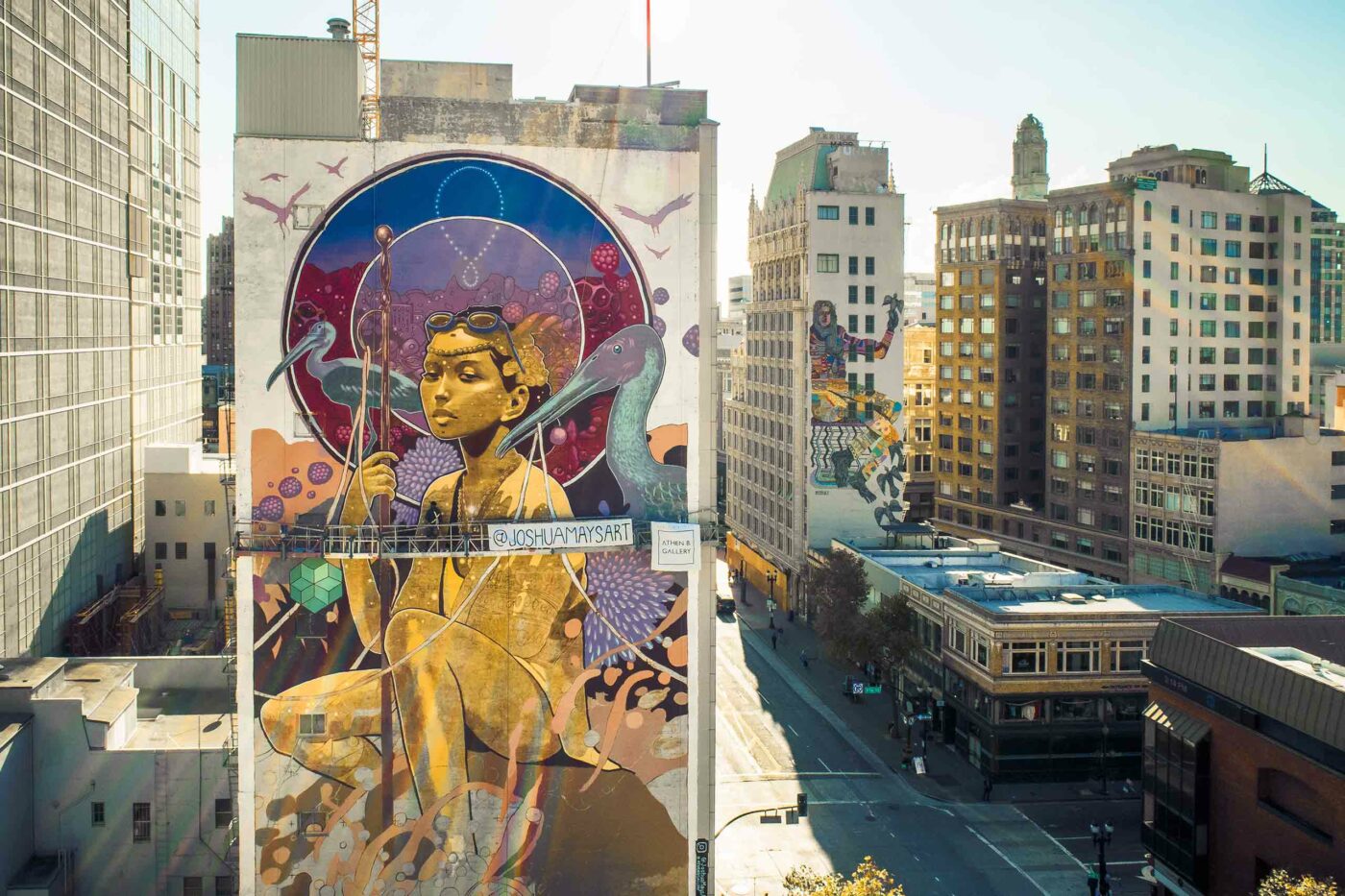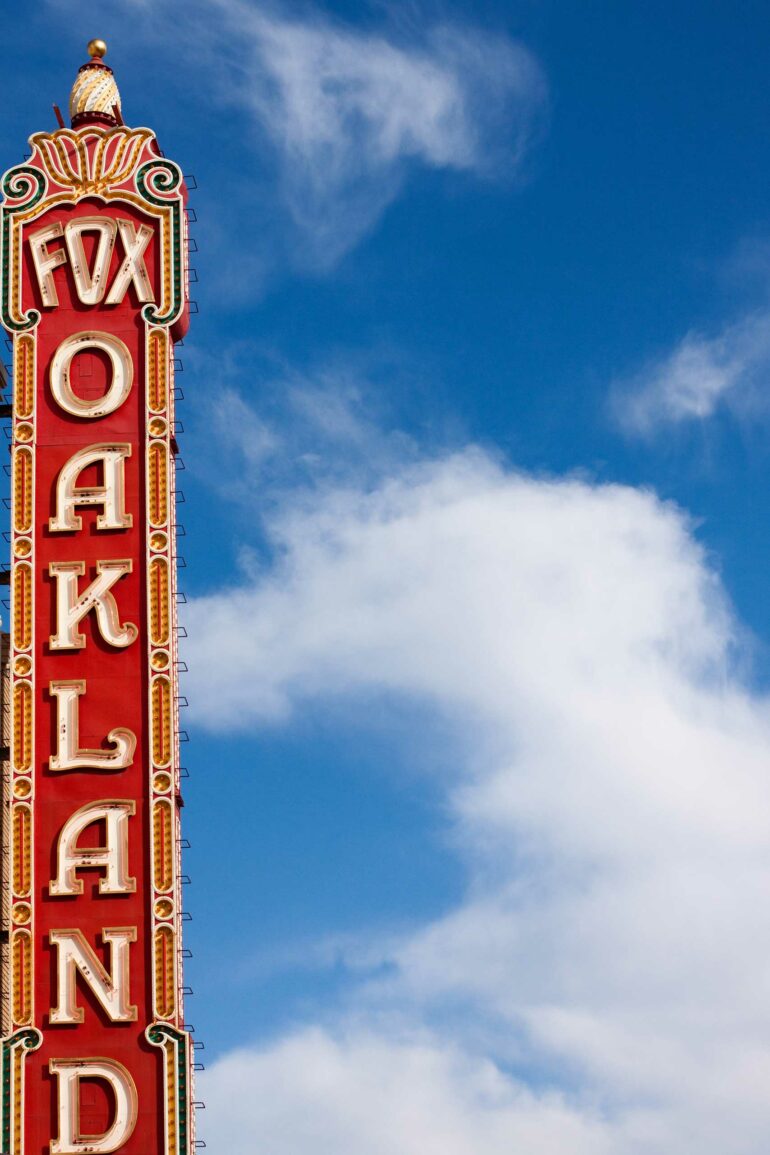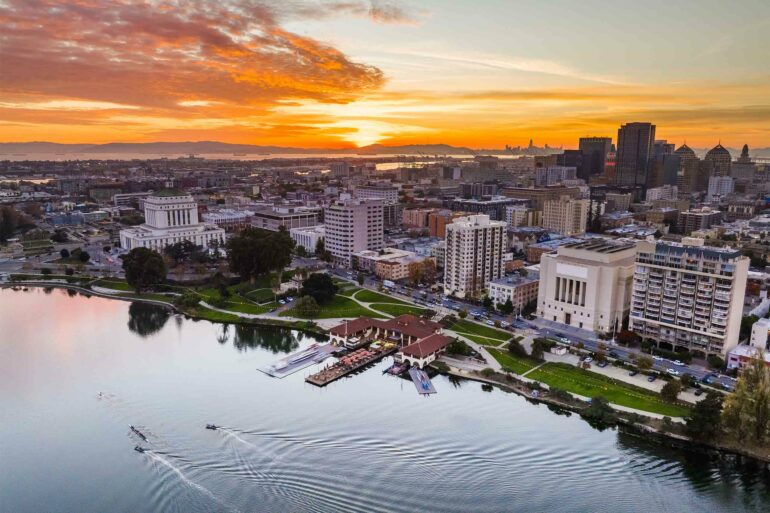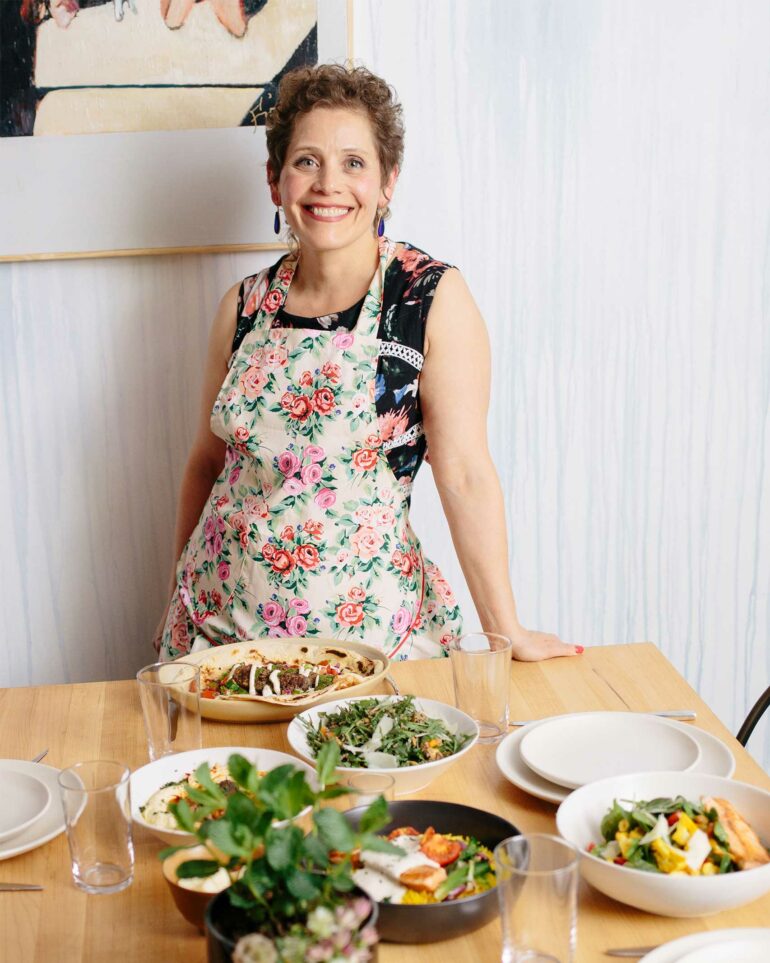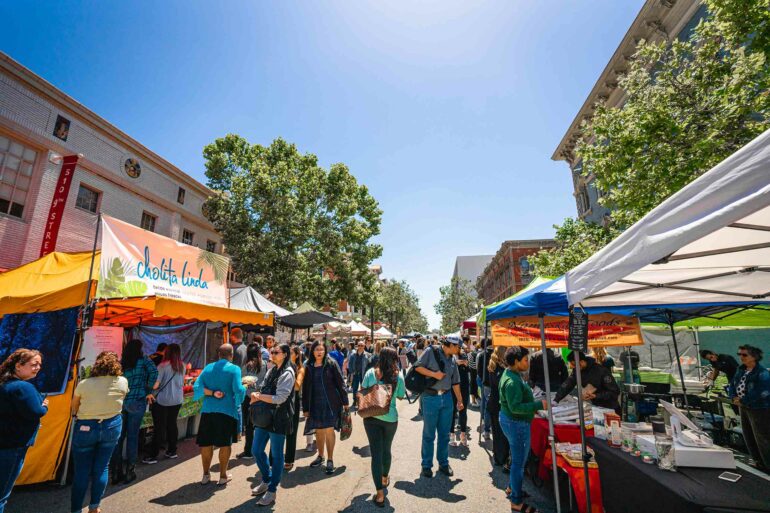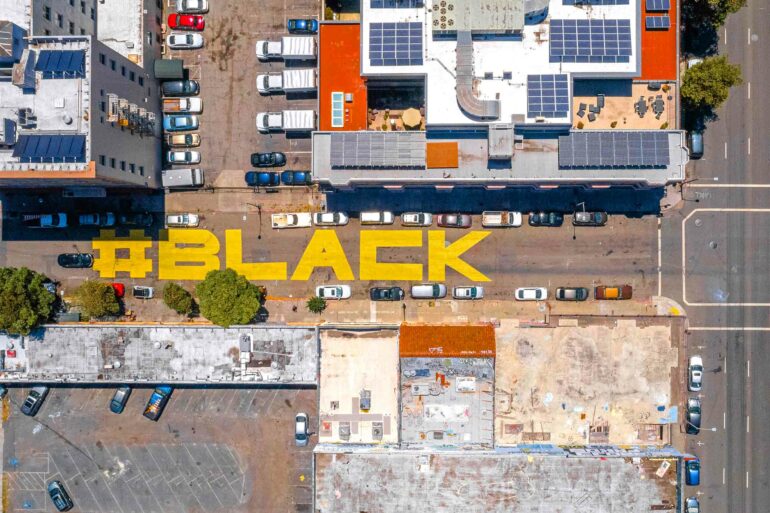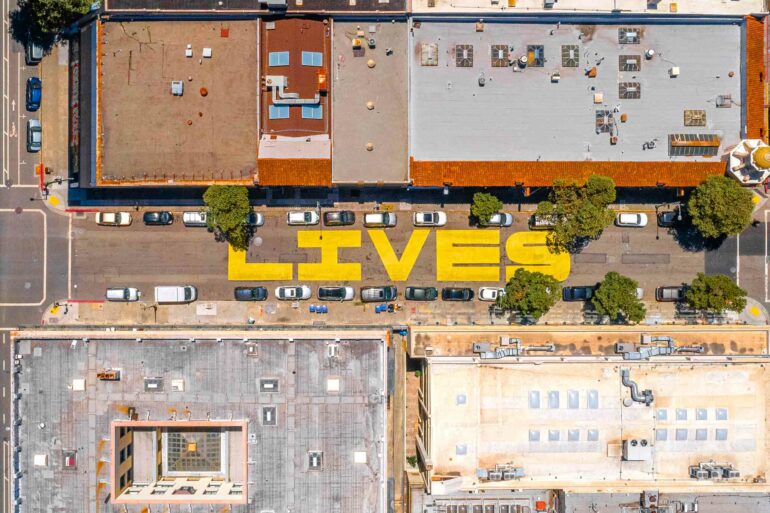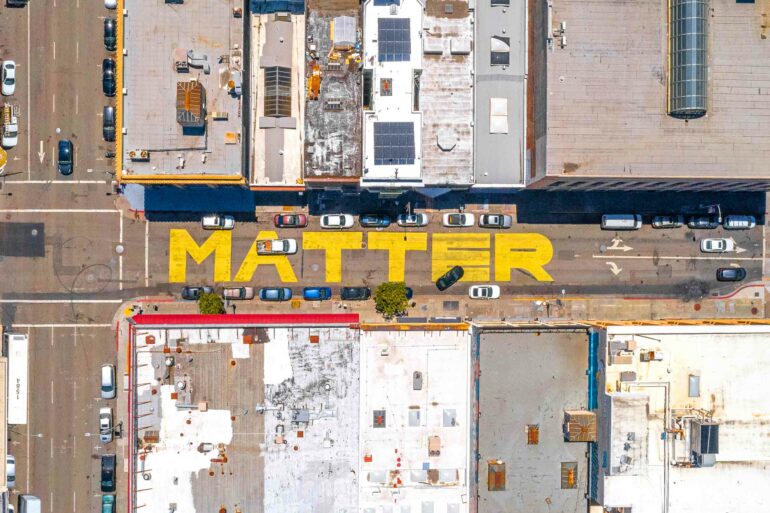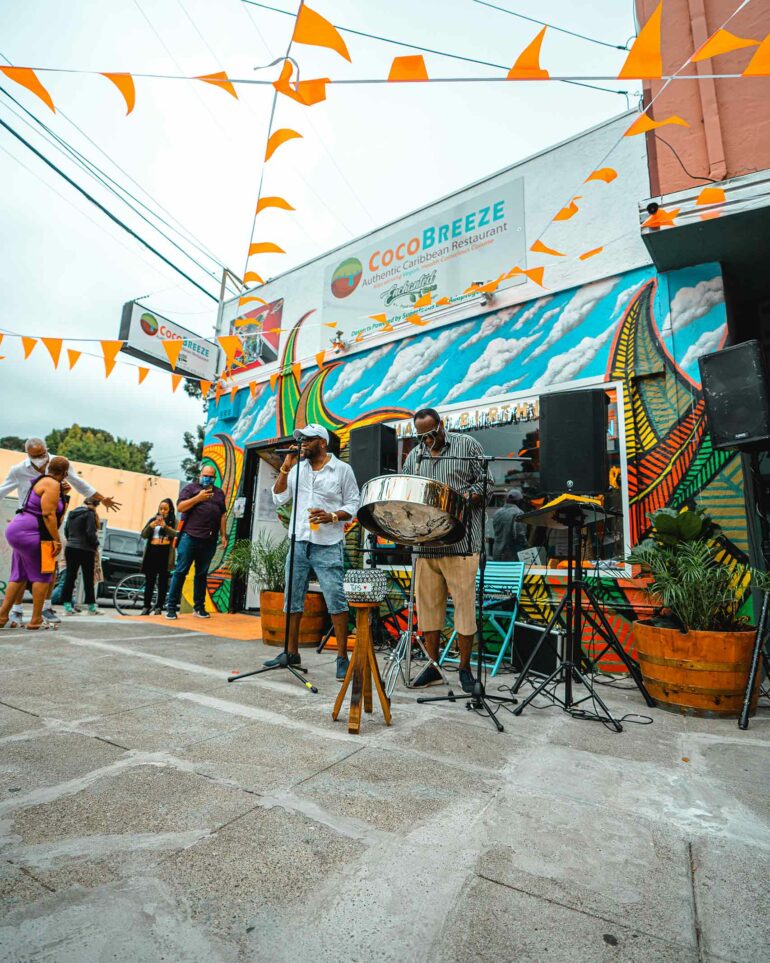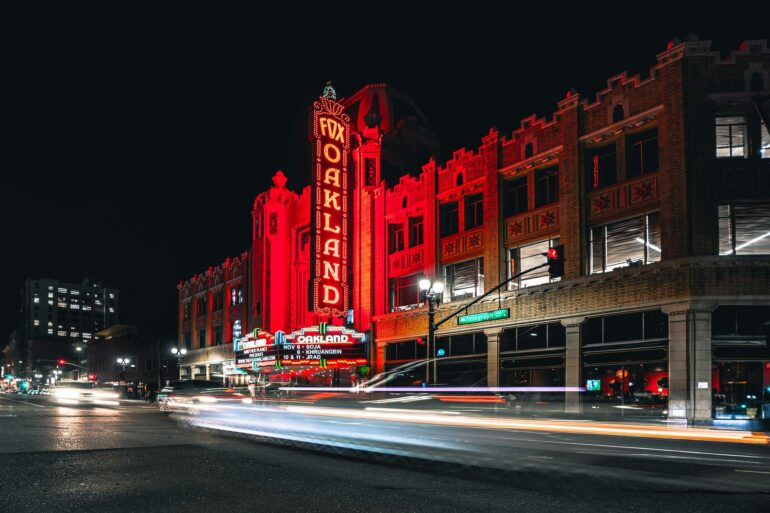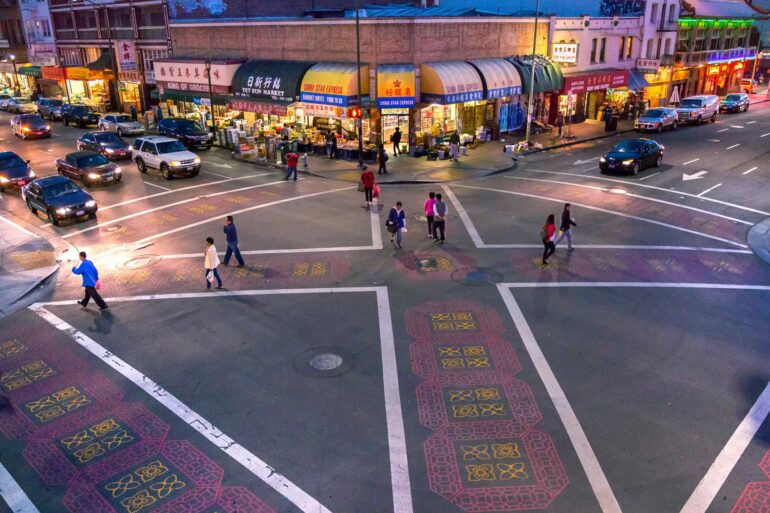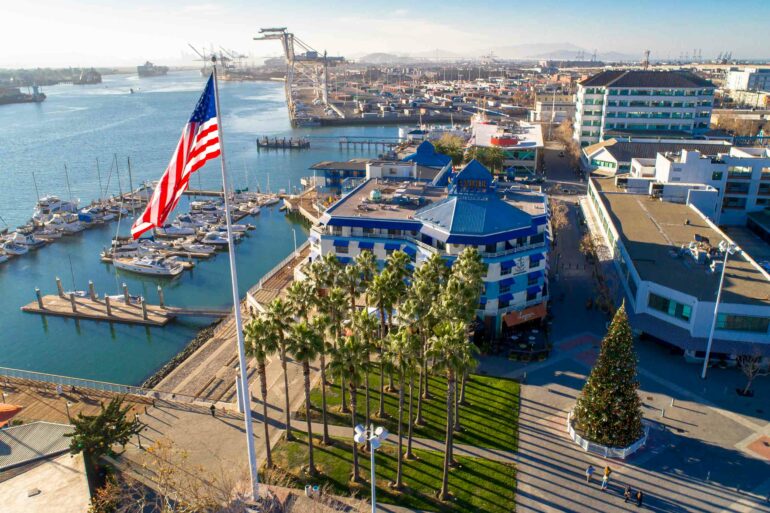No longer overshadowed by its storied neighbour across San Francisco Bay, Oakland has harnessed its proud traditions of social justice and the extraordinary diversity of its citizenry to emerge as a vibrant, iconoclastic masterclass in intersectionality.
Mica Talmor is an Israeli transplant, but she feels like the mayor of her own little part of Oakland. Piedmont Avenue has a distinct neighbourhood feel. People drink and dine outside, shop at farmers markets and support a dizzying array of stores specialising in exotic health foods and fermentation. Mica feels like the mayor, not just because people smile and wave as she cycles to her popular restaurant Pomella, which serves a fusion of Maghrebi, Levantine, North African and Middle Eastern food, but because they saved her.
“I signed the lease in 2019 and we opened in March 2020, just as the world shut down,” she says. Covid couldn’t have struck at a worse time for the chef and restaurateur, but her adopted community rallied around. “I changed to takeaway meals, and they just showed up, week after week. We wouldn’t have survived if the people hadn’t made it a point to support us. And not just us, but all the small businesses.”
There was a time when Oakland stood in the shadow of its more storied, postcard-ready neighbour San Francisco. As that burg’s stunning cityscapes, booming corporate business, rich civic culture and libertarian lifestyles magnetised more and more migrants from all over the US and beyond, spiralling rents and property prices caused many more to settle in the last decades of the 20th century in Oakland as a kind of ‘bridge-and-tunnel’ compromise, still within an easy few miles across the Bay Bridge of the Golden Gate City’s gleaming office blocks and vibrant nightlife. They brought with them aspirations for a less competitive, more community-driven way of life fomented in San Francisco during the hippy 1960s and hedonistic 1970s, and found themselves more able to live by those principles across the bay, in the process shaping an extraordinarily diverse and intersectional citizenry. Not that Oakland didn’t already have exemplary social justice credentials of its own.
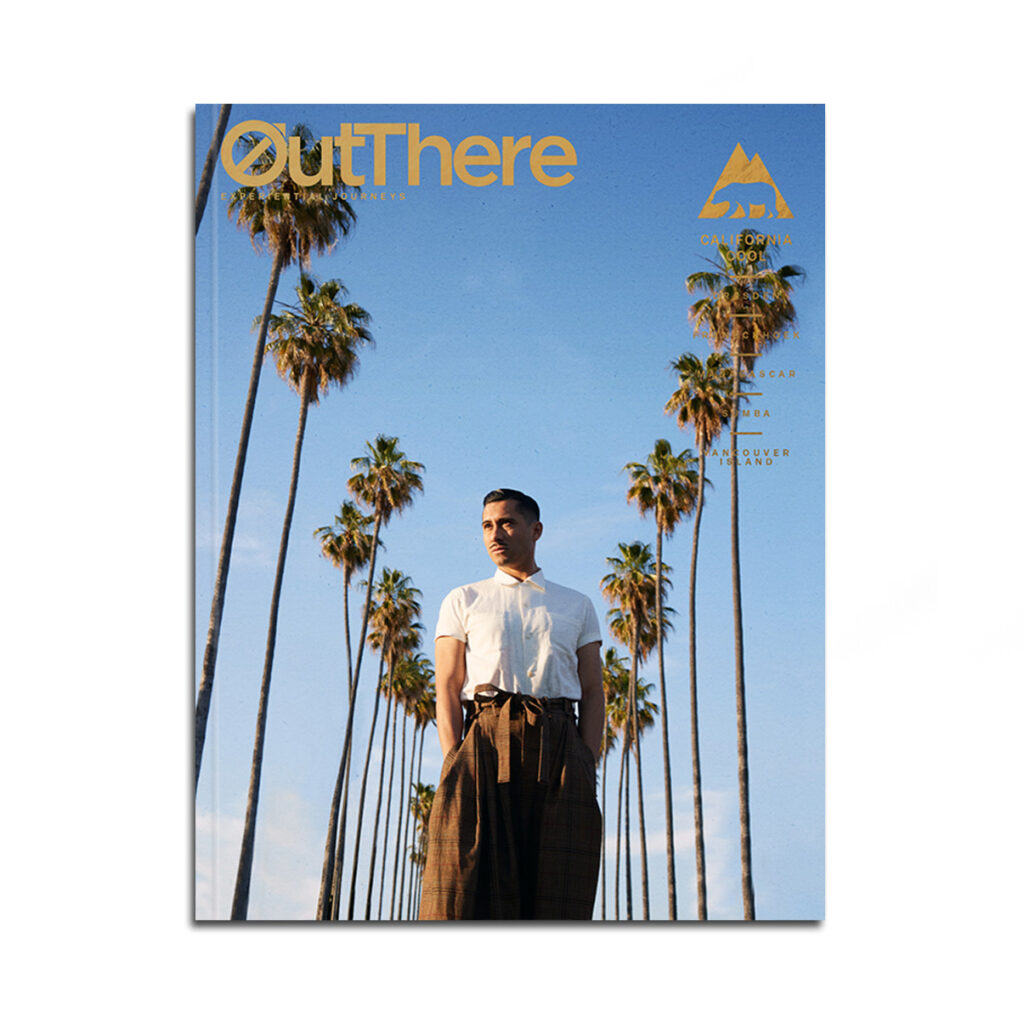
This story first appeared in The California Cool Issue, available in print and digital.
Subscribe today or purchase a back copy via our online shop.
The Black Panthers were founded here in 1966, and the city was also an important hub for women’s suffrage and anti-apartheid movements. Today, 125 languages are spoken here, and Oakland’s neighbourhoods both have their own intriguing identities born of their mix of residents, architecture, businesses and geography, and a sense of porous borders, of belonging to the whole city.
“The people are this city’s secret sauce,” says Sean Sullivan, who with his partner Richard Fuentes owns the LGBTQI+ venues Port Bar and the recently opened Fluid510. “Yes, you’ve got the weather” – far less prone than San Francisco to ocean fog, Oakland typically enjoys a sunnier, more outdoor-living-friendly climate – “but it’s all about the people. Our selling point is the diversity of our community.”
And, as Mica’s experience attests, that community fosters a mycelium-like commitment to nurturing that diversity, and relishes its rich socio-cultural benefits. “When I first came here, a cashier said, ‘Have a nice day,’ and I thought, ‘What the fuck? I don’t even know you,’” she says. “But now I’m like, ‘Have a nice day,’ to everybody. And I actually mean it.” I’m a more understanding person than when I arrived. My team have been with me for years now, the oldest is 60 and the youngest is 19. The way the young people see the world is crazy. Sexual orientation is almost a non-subject. They can date male, female, whoever. It’s not a black-and-white thing.”
Home to the most lesbian couples in the US, Oakland doesn’t have an LGBTQI+ neighbourhood as such. Instead, communities defined by their sexuality, gender orientation or ethnic background are integrated all over the city, whether in hipster hoods like Temescal and Piedmont Avenue, genteel burbs like Rockridge and the revitalised Lake Merritt or Downtown, which seems always to be hosting some or other festival or parade. Thanks to the city’s compact topography, these neighbourhoods feel integrated too, allowing you to effortlessly stitch a hike among 150-year-old sequoias in Joaquin Miller Park to an al fresco brunch in the up-and-coming Dimond district to a browse through Uptown’s artsy independent boutiques and a free Friday evening gig at the Oakland Museum of California. And while Oakland may lack ultra-iconic landmarks like San Francisco’s Golden Gate Bridge or Transamerica Pyramid tower, its streets present a characterful blend of Victorian, Art Deco and street art-rich modern architecture with its own charms, rewardingly discoverable on a range of guided architecture- or mural-themed walking tours. Tours are definitely a thing in Oakland, and visitors can explore the city through a broad range of themed lenses, from black-owned businesses to cannabis, vegan and ale.
Everybody eats, so the dazzling food culture here, which fuses countless global influences with the farm-to-fork ethos pioneered by Alice Waters in the 1970s and 1980s from her restaurant Chez Panisse in the adjoining city of Berkeley, is the most universal expression of Oakland’s extraordinary cultural intersectionality. But the LGBTQI+ scene too breaks new ground, with the US’ first dedicated fitness centre in Queer Gym, the first gay-led church in First Congregational Church of Oakland and, in Downtown’s Diving Swallow Tattoo, an ink studio staffed entirely by female and genderqueer artists.
“Oakland incubates with the doors open. You’re going to see it all”
Such is the vibrancy of the community, Sean and Richard have been able to buck the global trend of vanishing gay venues. While the bars of Downtown remained largely shuttered between lockdowns at the height of the Covid pandemic, Port Bar did a roaring trade with local queers and allies determined to sustain the buzzing hangout that is a symbol of the city’s pride, both in its diverse non-heterosexual populace, and its own emergence as a cosmopolis, often compared to Brooklyn, with its own uniquely progressive culture. “People were tired of doing the bridge-and-tunnel thing,” says Sean. “We needed our own place.” Two, in fact, when you factor in Fluid510, the 465m sq/5,000 ft sq bar, restaurant and club he and Richard launched this May.
Aside from the thriving LGBTQI+ venues and businesses in the city, which include the White Horse Bar, the US’ oldest continuously operating gay pub, Sean puts Oakland’s queer culture’s success down to the large number of community organisations actively supporting LGBTQI+ people to establish their authentic identities and pursue their aspirations as equal citizens, including through myriad public events from trans open-mic nights to queer yoga sessions to the LGBTQI+ fitness and social club East Bay Front Runners and Walkers. With ten years’ experience working with at-risk, homeless and sexually exploited young people, he is well qualified to advocate for these organisations’ agency.
The arts are another barometer of the rude health of the city’s progressiveness. “Oakland is such an incubator for art,” says Thomas Cavanagh, technical director of Bandaloop, an aerial dance company that has been based here for 30 years. “I deal with the state department a lot, getting permits. There’s a cultural diplomacy here. Whether you’re speaking to a property owner or the city, it’s not that they reflexively say yes, it’s that they don’t obtusely say no.” He credits landlords’ support too for ventures they feel contribute to the city’s unique cultural offer, citing Bandaloop’s below-market-rate rent for their HQ as a vital factor in their survival. Key also is the arts’ scene’s commitment to actively bringing work to the people. “Brooklyn incubates behind a box. Oakland incubates with the doors open,” Thomas says. “You’re going to see it all out in the street. The muralists, the dancers, the food. And the ugly stuff too. You’re gonna see the crime.”
Everyone here talks about the crime eventually. Along with homelessness, it’s an inescapable part of Oakland life, but residents’ responses to it tend to be yet another indicator of the city’s open-heartedness. Mica hopes the compassion, empathy and emotional intelligence that delivered her from her own Covid crisis can be extended to a progressive solution, while Thomas’ resolve is heightened to confront social problems through artistic expression. All acknowledge that the kind of creeping gentrification that turned San Francisco from egalitarian hippy Mecca to an exclusive palace of privilege is making inroads into their city – although its proud support for more independent businesses than chains shows encouraging popular resistance – and all are quick to put the city’s issues in the broader global context of inequality and disempowerment of the unwealthy. Most also cite the city’s exemplary record on social justice as a reason for optimism.
Says Sean, “Crime had gone down but came up around Covid again. But I see the commitment among people to change things is strong. Twenty years ago, you could play ball on Broadway. Now there’s a plethora of bars and so much more housing has been built. Things are really looking up.”
Words by Zack Cahill and Rupert Mellor
Photography courtesy of Visit Oakland, David H. Collier, Greg Linhares, City of Oakland, Coco Breeze, Pomella, and Jack London Square


